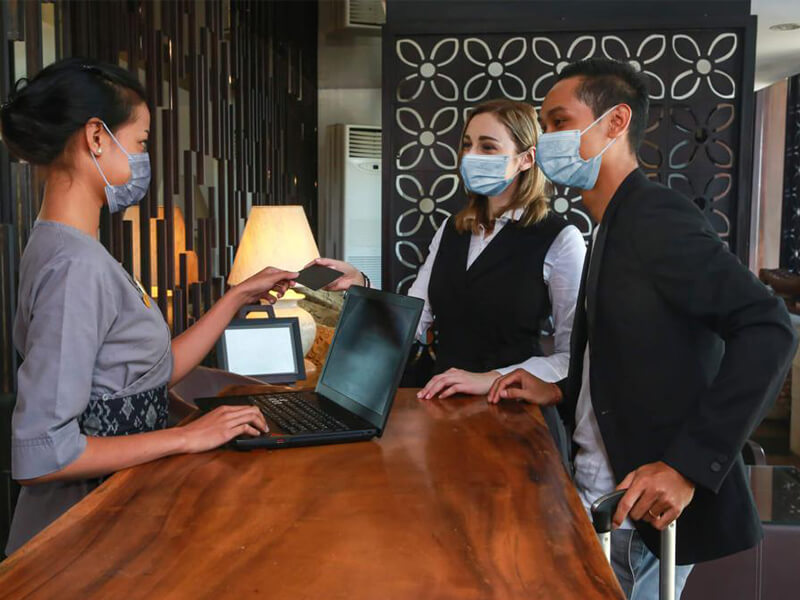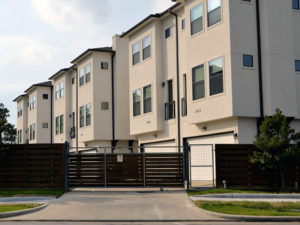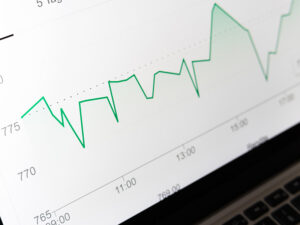Hospitality industry rebuilding to new heights after COVID-19

Closing the first quarter of 2021, the hospitality industry prepares to re-establish its footings in the economy. The market projections expect growth to be slow throughout 2021, gaining some traction heading into 2022.
Making up the hospitality sector are hotels, restaurants, lodging, entertainment, and travel markets. Job loss in these markets hit an all-time high in 2020. Adding further impact to the person-to-person interactions for this sector are health-related concerns for the workforce and consumer — focused on cleanliness to maintain a safe and productive work environment.
Globally, due to the 2020 pandemic, the hospitality market experienced a drop of 2.4 percent in compound annual growth rate (CAGR). The market anticipates recovery and growth of 8 percent in 2021. Based on the 2021 forecast, recovery performances are expected to continue into 2022, with 2023 set to exceed over $5590 billion in total revenues.
Industry sources for hospitality’s global market reopening predict Europe will take the lead, followed by the Asia Pacific and North American. Within the U.S., localities expecting an increase in recovery opportunities are Pacific coastlines, Northern mountains, and Southwest regions.
For an industry built on customer expectations, organizations will face tough challenges as they struggle to reopen, meet bottom-lines, comply with health code guidelines, and deal with the industry’s supply chain grappling with availability and delivery of products for service.
2021 Challenge for Procurement
Hospitality leaders expect to see an expansion of procurement’s role, taking on a larger scope as management integrates strategic processes to fulfill the business needs, customer satisfaction, and profit.
This year, procurement teams need to deliver much more than product, service, or cost savings. The focus is on maximizing value keeping the bottom-line intact while maintaining the quality of service and products throughout the entire operations.
It’s time for industry leaders to re-establish and confirm supply chain partnerships that bring in new sub-tier suppliers to meet short and long-term demands and reliability. Holding on to key suppliers already familiar with the company’s procurement methods and expectations is critical while adapting to the coming changes. Shortages are part of the industry and having a list of qualified alternative suppliers (diversity) is necessary to orchestrate a positive solution.
Whether the supplier is local, regional, or global, locations could impact delivery schedules and costs, adding more challenges for the 2021 recovery phases. Procurement will need to develop flexible ordering and delivery strategies, reconfiguring (shorten) shipment schedules based on the supplier location to fit the ongoing business demands.
2020’s endurance was a short-term strategy — congratulations on accomplishing that goal. 2021 is about long-term success, fulfilling needs and expectations for the best price of quality goods.
Intelligence of Procurement — Technology Planning for Growth
The need for procurement intelligence is an insight strategy (analytics), monitoring what, when, where, how often, and cost, spotlighting the market’s demands with the organization’s supply chain performance. For procurement management, the information is critical to making cost-effective quarter-to-quarter business and industry decisions during recovery.
Today’s situation is scalable for the hospitality market. Like the remote workforce, organizations, procurement, and suppliers must adapt to the new normal and data-driven challenges for long-term profitability. Past operating models will lose their effectiveness (higher operating costs) in a digital world.
Growth is dependent on procurement’s resilience to help improve the odds of success; maintaining flexible supplier provisions capable of changing with the company’s strategy ensures delivery readiness and performance. By the end of the year, hospitality indicators expect procurement to be running smoothly and ready to tackle the next challenge as the industry enters another year of growth.
Trends Measuring Up to Expectations — Public And Private
Caught off-guard industries struggled with the disruption and rushed to find short-term solutions. Mounting health concerns left few alternatives to minimize the impacts. Yet looking back the pandemic and technology left this industry with beneficial improvements directly linked to the success of hospitality markets and the economy.
The following trends have now become synonymous with hospitality procurement:
Recovery planning — As the industry returns and rebuilds its infrastructure, impacts will continue to surface throughout 2021 for procurement and supply chains — this time, the industry is prepared to maneuver through the challenges that lay ahead.
Smart tools — Procurement teams equipped and trained with new-generation tools are improving efficiency and productivity, adding value to the company brand and the end-users experience (satisfaction).
Business continuity — Ready to navigate and prepared to build deeper relationships, procurement is set to avoid the risk of short inventories as the market growth surges upward.
Remote workforce — Adapting to changing business environments, procurement approaches are working economically with on-site and remote workforces to yield new methods for expanding resources, procurement flexibility and business transparency.
Supply chain management — Without strategic partnerships within the sector to strengthen the present and re-enforce the future bottom-lines, industry sources caution against price increases in a competitive marketplace.
The procurement industry’s biggest challenge is to do more with less while looking for long-term business growth opportunities. It will come down to how procurement and organizations respond to future demands and opportunities.



